How efficiently a garden uses its resources, such as electricity, nutrients, and water, will directly influence a grower’s return on investment. Therefore, growers are always searching for technologies that will heighten their garden’s efficiency.
One of the most influential pieces of equipment in a greenhouse or indoor garden is the artificial light source. In a greenhouse, the artificial light source allows a grower to extend their growing season. In an indoor garden, the artificial light source is the main energy source for plant growth. When considering how important the artificial lighting system is, it only makes sense for growers to use the most efficient and effective lighting system available.
During the last several years, great strides have been made in the horticultural lighting sector. Increased efficiency of old technologies and the introduction of new lighting technologies have given growers of today many choices when hunting for a light source. Although comparing different light technologies can be a bit like comparing apples and oranges, a closer look at some of the most popular new light technologies can give a horticulturist some insight as to which lighting system may be the best fit for them.
Double Ended High Intensity Discharge (DE HID)
High intensity discharge (HID) lighting (both metal halide and high-pressure sodium) once dominated the indoor gardening and greenhouse markets. Back in the day, these lighting systems were little more than converted streetlamps. They were capable of, but not necessarily designed for, growing plants. Over the years, many advancements in the HID technology increased efficiency and the amount of usable light energy (photosynthetically active radiation or PAR).
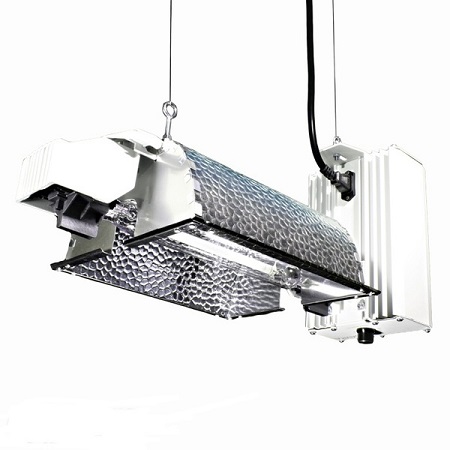
However, it was the introduction of the double ended (DE) lighting system that really grabbed the attention of growers around the world. Double ended HID lighting systems are more efficient at converting electricity into light and have an increased longevity, which dwarfs the old HID lighting systems. The typical single ended HID lighting system will have lost 20-30% of its original output after 10,000 hours of operation. However, double ended HID systems do not degrade the bulbs as quickly. In fact, after 10,000 hours of operation, a double ended HID system will have lost only about five percent of its original output.
Double ended HIDs not only have increased longevity for lamps, but they also produce more light per watt of energy consumed. It is not uncommon for a double ended lighting system to produce 10-30% more light per watt of energy consumed when compared with magnetic core ballasts or high-frequency electronic ballasts. All in all, double ended HID lighting systems pack the punch of HID lighting and the bonus of increased efficiency.
Ceramic Metal Halide
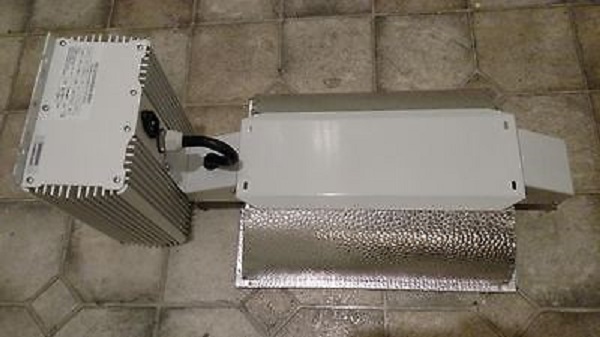
Ceramic metal halides are another improved upon HID technology. Ceramic metal halides have a full spectrum output and a CRI (color rendition index) rating around 90. Light from the sun has a CRI of 100, so a ceramic metal halide can deliver an intense spectrum very close to that of sunlight. Ceramic metal halide bulbs also have a rated life span of 20,000 hours, which is a longer life span than a typical single ended HID.
Square Wave vs. Sine Wave
Double ended and ceramic metal halide technologies can become even more efficient when they are operated by a square wave ballast. Most electronic ballasts operate on a sine wave at high frequencies (120,000 Hertz). New square wave ballasts operate at much lower frequencies (50-100 Hz). The low frequency operation is easier on the internal electrical components, which leads to increased longevity for the entire unit. The low frequency operation also helps avoid harmonic distortion that could potentially cause a color shift in the light system’s spectral output. In other words, lighting systems which operate on square wave technology are more consistent in spectral output and are much less likely to have any “shifts” in the spectrum throughout the bulb’s life span.
Induction Fluorescent
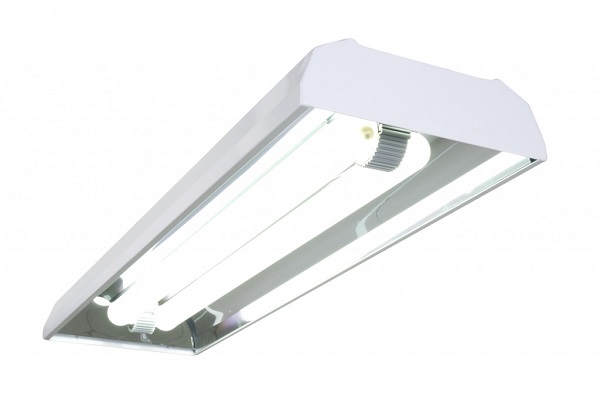
Induction fluorescent lighting is unique in that it utilizes a sealed bulb design. This is different from standard fluorescents and HIDs because these technologies rely on electrodes to bring electricity into the bulb. Induction fluorescent lighting utilizes microwave or radio frequencies to pass through the sealed bulb and excite the metals and gases sealed within. This allows induction fluorescents to retain their CRI and amount of PAR (photosynthetically active radiation) for a longer time. Read this article for more information CRI and PAR.
The initial cost of a horticultural specific induction fluorescent lighting system is high, but a gardener will not have to pay for bulb replacement during the entire life span of the fixture (typically 10-15 years). The cost of bulb replacement is something that many gardeners overlook when purchasing a lighting system. For example, a T5 fluorescent lighting system will generally require annual bulb replacement. Like the T5 fluorescent systems, induction fluorescents are a great choice for vegetative growth or for clones and seedlings. Unlike the T5 fluorescent systems, induction fluorescents will not require bulb replacement for over a decade.
Sulfur Plasma
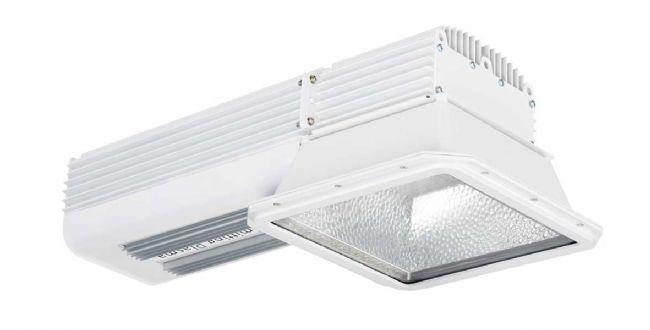
Sulfur plasmas are another induction technology that utilizes a sealed bulb design. The most promising aspects of sulfur plasmas are they have the intensity of HID lighting and emit the ideal light spectrum for plant growth. With CRI ratings of up to 94, sulfur plasma lighting systems have the closest spectral light output to that of the sun than any other artificial horticultural light source. As with HID lighting, coverage and plant canopy penetration are not issues for sulfur plasmas. Another advantage of sulfur plasmas is longevity. Like induction fluorescents, sulfur plasma lighting can last up to 10 years and will lose very little PAR and CRI over the course of the fixture’s life span.
LED
Light emitting diodes (LEDs) have come a long way since they were first introduced to the horticultural industry. The first few generations of horticultural LEDs fell short of meeting the demands of indoor growers. However, that didn’t stop horticultural LED manufacturers from continuing to develop more effective and more efficient lighting systems. One of the biggest breakthroughs for horticultural LEDs came recently in the form of COB (chips on board) technology.
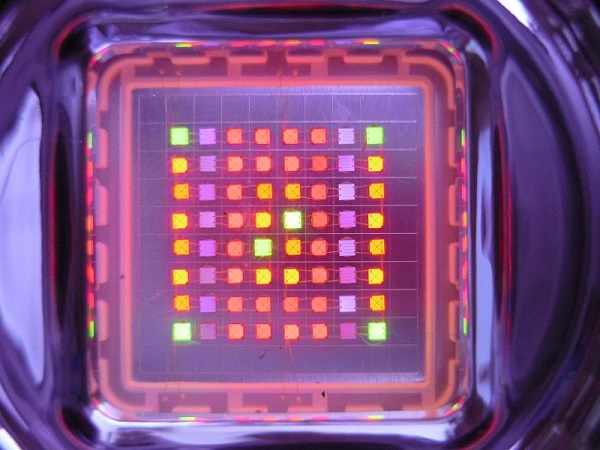
In a COB LED system, there are multiple light emitting diodes packed into a single module. The groups of LEDs in a COB system are easier to integrate into an effective horticultural light source. In fact, 20-50 individual light emitting diodes can be replaced by a single COB LED. Another advantage of COB LEDs is a larger surface cooling area, which increases longevity and overall efficiency. Perhaps the most impressive feature of COB LEDs is their radiant efficiency. A typical HID (single ended) system has a radiant efficiency of around 30%. This means roughly 70% of the electricity used by the system is converted to heat and not into usable light. A COB LED has a radiant efficiency of 40-50%, which, relatively speaking makes them one of the most efficient artificial light sources for growing plants.
When examining a lighting system, a good point of focus is efficiency. Put another way, a grower should examine the amount of usable light energy produced versus the amount of electricity used; the more efficient a lighting system is, the higher the return on investment. Comparing different lighting technologies can be difficult. Information provided by lighting manufacturers can be confusing and hard to compare. All in all, any of the lighting technologies discussed here will grow plants effectively. Ultimately, it is up to the grower to decide which lighting system would be the best fit for his or her garden.
Eric Hopper resides in Michigan’s beautiful Upper Peninsula where he enjoys gardening and pursuing sustainability.
Related Articles & Free Email Newsletter Sign Up
How and When an Indoor Gardener Should Change Grow Light Bulbs
How to Understand LED Grow Light Plant Lights and Watts
The 4 Best Grow Lights for Greenhouses




Comment here